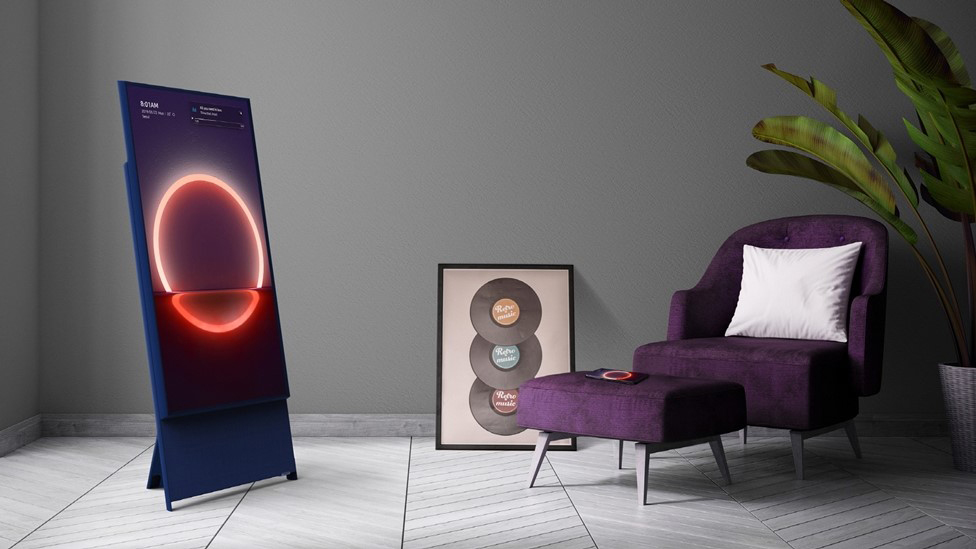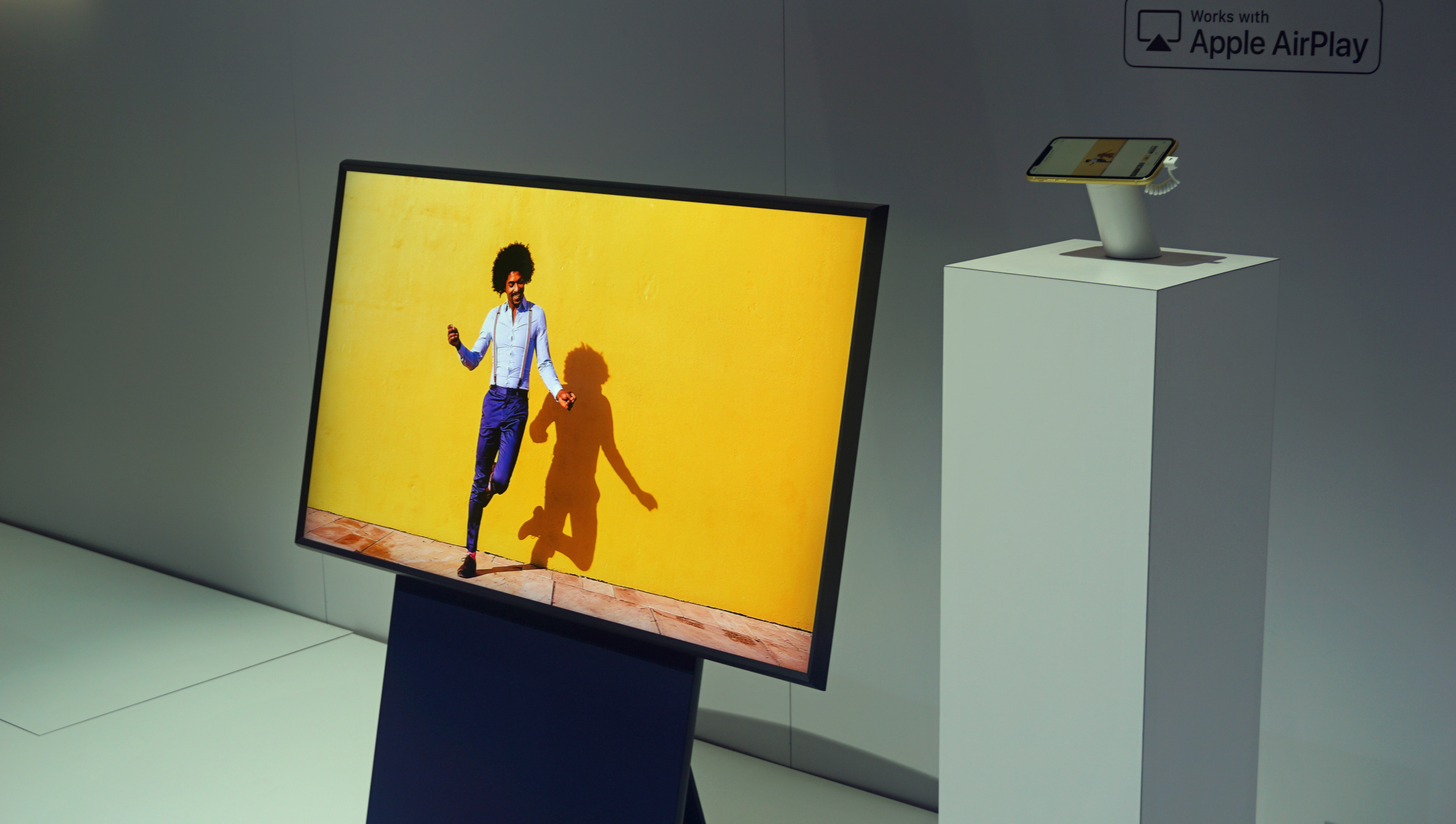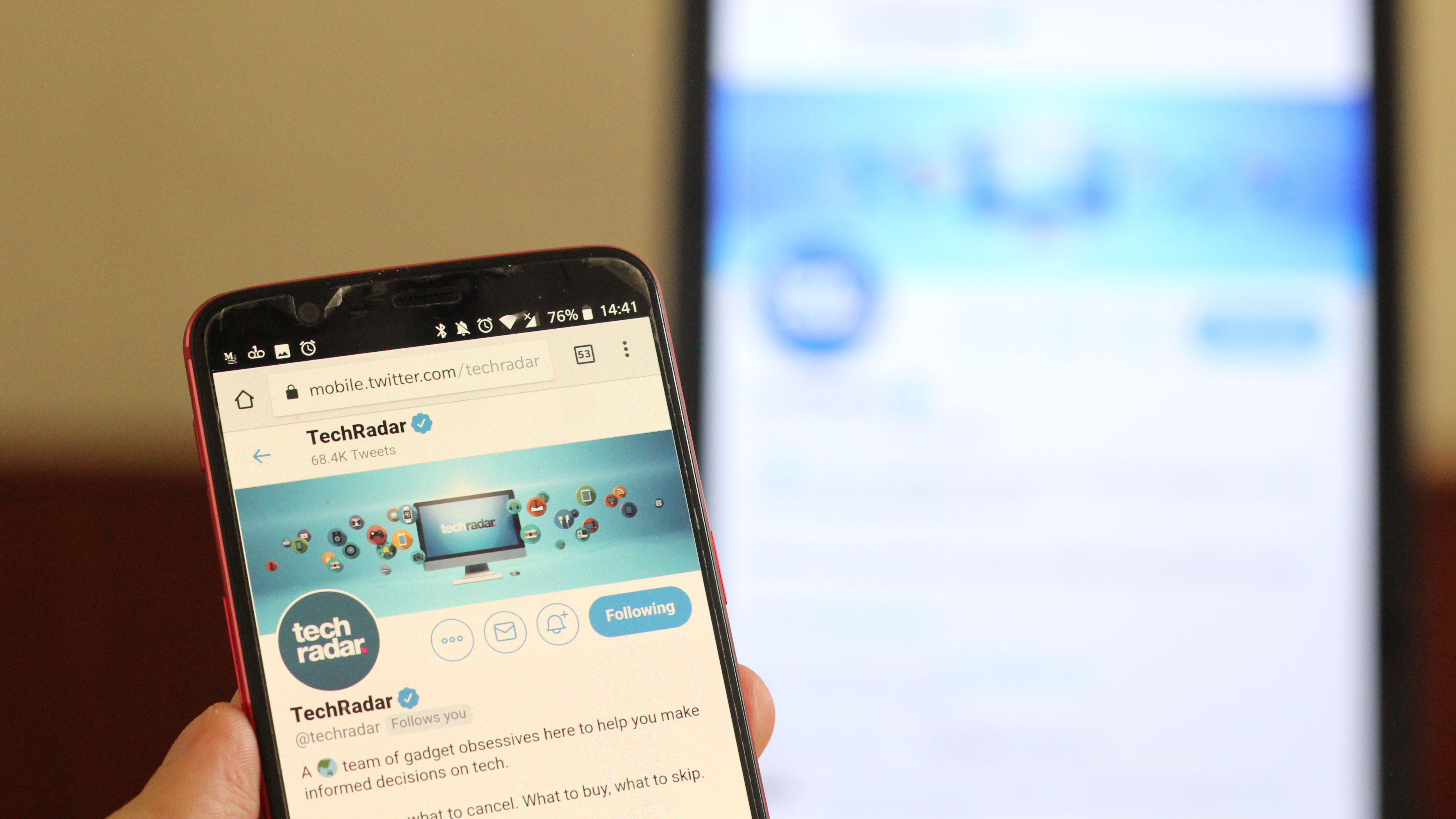We don’t need vertical TVs – smartphones do the job already
Opinion: Vertical TVs are a smart idea for no one in particular

One of the most eye-grabbing new Samsung TVs released this year is the Samsung Sero – a rotating unit designed for casting social media feeds, smartphone selfies, and the like onto a larger screen.
The logic behind a vertical screen is that it provides users with a way to enjoy small-screen content in a more impactful way, doing away with the hardware restrictions of a compact handset.
It also offers a lifeline to the humble television, which is no longer the primary screen in every household, having been supplanted by the flurry of smartphones, smart displays, tablets and laptops cluttering modern homes. Positioning a vertical TV as one oversized smartphone accessory is certainly one way to ensure relevance in a mobile-oriented world, you would think.
But I’m not convinced that an audience for vertical TVs really exists – and as such, attempts to pivot TV production towards smartphone-designed content are destined to fail.
A solution in search of a problem
The main problem with vertical TVs is that we already have vertically oriented screens, for vertically oriented content: our smartphones.
Social media apps such as TikTok and Instagram are designed with smartphones in mind, and there’s no real motivation for such companies to direct their efforts to TV-specific apps. They have a captive audience already.
As hardware, too, television screens are far less input dependent. We don’t watch TV shows or films that require us to press a button or swipe a screen every few seconds, and yet this is commonplace with the majority of content we access through our phones. Turning our TVs into touchscreens doesn’t offer much in the way of benefit , either, since getting close-quarters to the unit undermines the purpose of a larger screen, which is allowing you to see its content clearly at a distance.
Get daily insight, inspiration and deals in your inbox
Sign up for breaking news, reviews, opinion, top tech deals, and more.

The Samsung Sero is certainly a bold attempt to capture a new – largely non-existent – slice of the market, but the more immediate hurdle to overcome is the fact that there are no natively portrait-mode apps available. As a result, you’re forced to use your phone as a mediator – scrolling, swiping and typing as usual – just while casting to a larger monitor.
If anything, it makes using your phone feel less engaging. I was constantly having to look between both screens, given that I could only directly interact with the smartphone’s touch display.
Smartphones have proven adaptable to different viewing behaviors; it’s easy enough to rotate your mobile from a portrait to horizontal position to watch Netflix shows on your commute. However, this doesn’t mean the reverse is true – and casting to a vertical TV to use mobile-specific apps is an additional step the user really doesn’t need. Having to handle two screens simultaneously also defeats the purpose for which TVs are designed: letting us sit back and enjoy content without having to do anything at all.
The trend for creating more vertical video content is growing, with Netflix’s portrait trailers a prime example, alongside the explosive arrival of TikTok earlier this year. But until TV streaming services start releasing dedicated programming that has to be viewed in portrait, home televisions really have no need for a portrait mode.
TechRadar Phones Editor, James Peckham, seconds this: "More and more content is being produced for a vertical format, but a lot of it isn't professionally made. The rise of TikTok and Instagram have meant that more video is filmed in a vertical format than ever before, but it's only a few services that stream professionally made footage, such as new contender Quibi. While we may spend more time watching content in Portrait mode on our phones, I'm uncertain if there's enough out there to mean you'll want a TV in that same orientation."
There’s an argument for building a technology first – ‘build it, and they will come’ – and it’s what Samsung has done with its aggressive push into 8K TVs. However, vertical screens already exist on the small scale; there isn’t really a problem that vertical TVs would fix.

At what cost?
For the odd time someone might want to cast IGTV videos from Instagram, or a video of someone’s birthday party, onto the big screen, getting to rotate a TV screen could be handy.
But the additional manufacturing costs to get the screen to rotate simply don’t seem appropriate to what the user gets out of it, at least doubling the costs over a TV with comparative screen performance – which is something unlikely to decrease with mass production, given how small the target demographic is.
I also can’t get past the fact that a flagship smartphone like the iPhone 11 Pro – which retailed for $999 / £1,049 / AU$1,749 at launch – is still cheaper than the Samsung Sero. Why buy a mechanically complex television to enhance your smartphone experience, when you could just invest in a better smartphone?
A possible hope in voice control
There is an alternative future where vertical TVs could catch on, if the growing competence of voice assistants (Alexa, Google Assistant, Bixby) could end up turning the likes of Twitter or TikTok into apps that function natively on the television.
Good luck getting anyone to tweet with a TV remote – but if we could type, record, film, and navigate in apps seamlessly with our voices, there might yet be life in a television that gives mobile-first apps a helping hand. But that future feels a while off.
For now, though, smartphones apps don’t need a vertical TV to expand their functionality – and sets like the Sero, or whatever might come after it, are just complicating user experiences rather than improving them.
- Next-gen TVs: the OLED, micro-LED and holographic TVs of the future
Henry is a freelance technology journalist, and former News & Features Editor for TechRadar, where he specialized in home entertainment gadgets such as TVs, projectors, soundbars, and smart speakers. Other bylines include Edge, T3, iMore, GamesRadar, NBC News, Healthline, and The Times.
